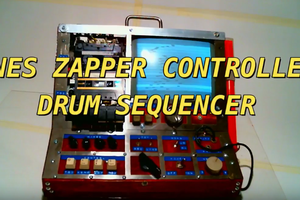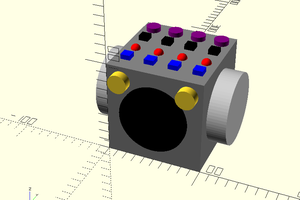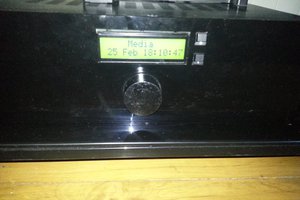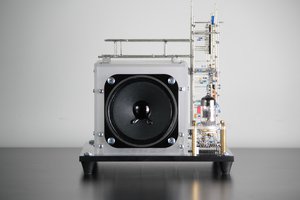Having dwelled on generative synthesis for a while, I had this idea of using renewable sequencers as the main factor in driving the music forward. In this dual voice synthesizer, there is one sequencer for each voice, and how they progress melodically and rhythmically through time is decided algorithmically.
I did make a video which quickly goes through the various features, and you can find that right below. I always prefered to get things in writing, so scroll a bit further down for that.
Structurally, we can divide the sculpture into five parts. We have a bottom plate, a middle plate, a user interface, a speaker enclosure, and a tower onto which the lightpipes are attached. These architectural elements all have electronics either inside or mounted to them. As for the electronics, we have a motherboard on the bottom plate, which contains the digital components, meaning the ESP32, LED drivers, and digital to analog converters. The middle plate, which also hosts the user interface and tube overdrive, contains all the analog electronics which are used to generate sound. The speaker enclosure contains a 5 watt amplifier, as well as some peripheral electronics for the Seeedstudio Wio Terminal which is mounted to the left of the speaker. Finally, the back side of the tower has all of the delay circuitry attached to it.
The panel on the left side houses six potentiometers which can alter pre-programmable parameters. At this moment it is set to amplitude envelope, cutoff and resonance frequencies for both voices, but it can also be reprogrammed to control other things, with a few limitations. On the panel, there is also a reset button, delay on/off switch, tube drive, and a toggle for manual mode, which allows you to take control over the previously mentioned parameters. Due to the random nature of the algorithm which effectively composes the music, the reset button is handy when you want a better starting point for the composition. It is also nice to be able to turn off the delay if you want a clean signal from the line output at the back.
The analog section is using Alfa reproduced CEM 33-series chips for its oscillators, filters and VCAs, with control voltage supplied from digital to analog converters on the motherboard. The resulting signal is sent to an ECC82 vacuum tube before it is split between the delay and the Seeedstudio Wio terminal, which provides real-time 32-band FFT analysis.
In addition to 18 intertwined LED lightpipes which mimic the amplitude of the two voices, as well as other parameters represented through color, there are two sets of white LEDs on each side of the sculpture which follow the rhythmic progression through the sequencers. The entire algorithm is in fact based on these sequencers, and they are an important factor in the way the music progresses through time.


 Russell Kramer
Russell Kramer
 jason.gullickson
jason.gullickson
 ronald
ronald
Eirik -- another beautiful build, just love it! Wrote it up for the blog, should publish soon. Thanks for tipping us off.